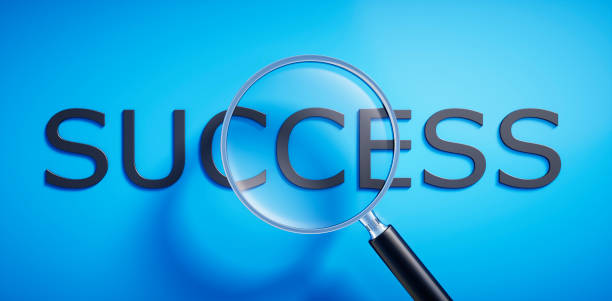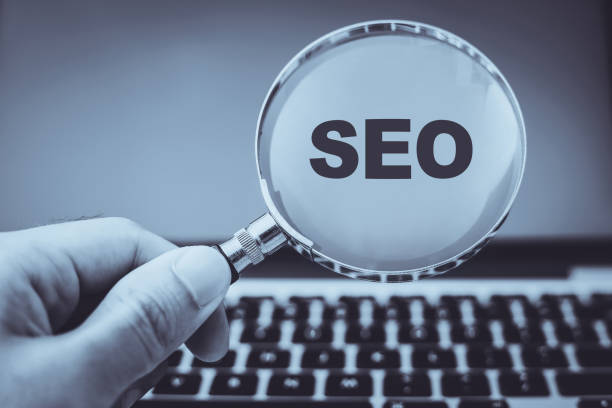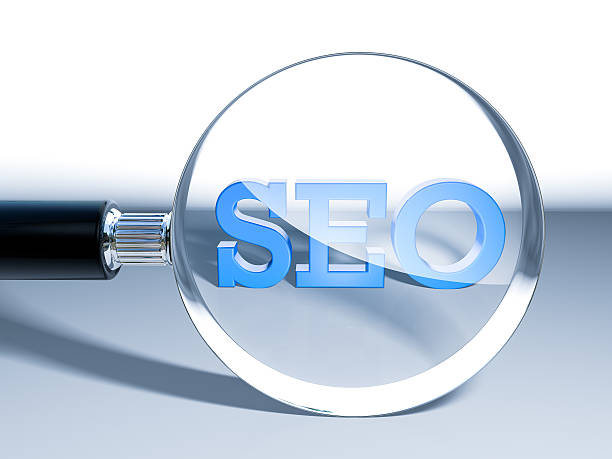Introduction to #SEO and Its Importance in the Digital Age

In today’s highly competitive world, an online presence is vital for every business and individual.
However, merely being online is not enough; you need to be seen.
This is where SEO, or Search Engine Optimization, comes into play.
#SEO is a set of techniques and strategies used to improve your website’s ranking in the organic results of #search engines (like #Google).
A simple yet profound explanation of why websites should invest in #SEO clarifies its importance.
This process is not merely #technical, but also involves #content, #technical, and #backlink-building aspects.
The main goal of #SEO is to increase visibility and attract organic, targeted traffic to your website.
#Organic traffic refers to visitors who reach your site through searches on Google or other engines, and this type of traffic typically has the highest conversion rate.
Without SEO, even the best websites might get lost in the vast amount of information.
In this section, we provide an explanatory approach to demonstrate the fundamental value of SEO in digital marketing strategies.
Understanding the foundations of this field is essential for anyone who wants a successful online presence.
This complex yet rewarding process is the key to achieving visibility and credibility in the digital space.
Does your company’s website create a professional and lasting first impression in the minds of potential customers? Rasawb, with its professional corporate website design, not only reflects your brand’s credibility but also opens a path for your business growth.
✅ Create a powerful and reliable brand image
✅ Attract target customers and increase sales
⚡ Get free consultation
How Search Engines Work and Google’s Algorithms

To succeed in SEO, we must first understand how search engines work.
The foundation of search engine operation rests on three main stages: Crawling, Indexing, and Ranking.
In the crawling phase, search engine bots, known as crawlers or spiders, scan web pages and follow links to find new or updated content.
Then, in the indexing phase, the collected information is analyzed and stored in a vast database.
This database is the search engine’s index.
When you search for a term, the search engine quickly checks this index to find the most relevant results.
The final stage is ranking, where Google’s complex algorithms come into play.
These algorithms, which are constantly changing and updating, consider hundreds of factors to determine a page’s rank in search results.
Factors such as content quality, keyword relevance, page loading speed, user experience, and the quantity and quality of backlinks are just some of these criteria.
Understanding these algorithms and their related news changes is crucial for a successful SEO strategy.
Without this basic understanding, your SEO efforts might be fruitless.
This section provides an educational and comprehensive view of the underlying workings of search engines so that you can base your optimization strategies on precise knowledge.
On-Page SEO and Page Optimization

On-Page SEO refers to all actions you can take directly on your website to improve its ranking in search results.
This aspect of SEO is crucial because it helps search engines better understand your content and determine if it is relevant to user queries.
The first step in On-Page SEO is keyword research.
You need to know what terms your users search for to find your products or services.
Then, these keywords should be strategically used in the Title Tag, Meta Description, H1, H2, and H3 headings, the main body of the content, and even in images (Alt Text).
Content quality is also of paramount importance.
Your content should be specialized, comprehensive, unique, and valuable to users.
Content readability, proper structure using headings and short paragraphs, and the use of Internal Links to connect related pages, all contribute to improving On-Page SEO.
Page loading speed and mobile responsiveness are also important factors that contribute to user experience and, consequently, your SEO ranking.
In addition to the above, optimizing URLs, using schema markup to highlight specific information in search results, and having a logical and understandable website structure are all part of the On-Page SEO strategy.
These elements help search engines better understand the structure and main topics of your website.
Remember that On-Page SEO is an ongoing process, and you need to keep your content updated as algorithms change or user needs evolve.
Below is a guideline table for the main On-Page SEO elements:
| On-Page SEO Element | Description | Importance for SEO |
|---|---|---|
| Title Tag | The first thing seen in search results. | Very High (Most important On-Page factor) |
| Meta Description | A short summary of the page’s content. | High (Increases Click-Through Rate CTR) |
| Headings (H1-H6) | Organizing content with headings. | Medium to High (Readability and Structure) |
| Keyword Density | The number of times a keyword is used in the text. | Medium (Natural use is important) |
| Images (Alt Text) | Alternative text for images. | Medium (Image SEO and Accessibility) |
Off-Page SEO and Backlink Building Strategy

Off-Page SEO refers to activities performed outside your website that aim to improve your domain’s authority and strength in the eyes of search engines.
The most important aspect of Off-Page SEO is backlink building.
A backlink is a link that points from another website to your website.
Search engines, especially Google, consider backlinks as a “vote of confidence” or “referral” from one site to another.
The greater the number and quality of inbound backlinks to your site, the higher your Domain Authority in the eyes of search engines, and this helps improve your SEO ranking.
However, not every backlink is valuable; quality takes precedence over quantity.
Backlinks received from reputable, industry-relevant, and high-domain authority sites are much more valuable.
There are various strategies for building backlinks, including creating high-quality content that naturally attracts links, participating in guest blogging, broken link building, and using social media to promote content.
In addition to backlinks, other factors such as social signals, which include sharing and interaction on social networks, and brand mentions on various websites and forums, also play a role in Off-Page SEO.
These factors indirectly contribute to increasing your site’s credibility.
A specialized and ethical strategy in Off-Page SEO can make a significant difference in your website’s ranking in search results.
With this approach, your SEO will grow organically and sustainably.
How much does losing business leads due to an unprofessional website cost you? Solve this problem permanently with professional corporate website design by Rasawb!
✅ Increase credibility and trust of potential customers
✅ Easier attraction of new business leads
⚡ Get a free consultation now!
Technical SEO and Website Infrastructure

Technical SEO refers to the process of optimizing your website’s technical infrastructure to help search engine crawlers discover, crawl, index, and rank your website more effectively.
This aspect of SEO is often invisible to users, but plays a vital role in your site’s visibility in search results.
Page loading speed is one of the most important technical SEO factors.
Websites that load quickly provide a better user experience and are preferred by Google.
Tools like Google PageSpeed Insights can help you identify speed issues.
Mobile-friendliness is also a mandatory factor, as most searches today are conducted via mobile devices.
Your website must be fully responsive and display well on all screen sizes.
Other key aspects of Technical SEO include using an SSL certificate for HTTPS protocol (which ensures site security and is a ranking factor), optimizing URL structure, creating an XML Sitemap to guide search engines in crawling all important pages, and using a robots.txt file to control crawler access to specific parts of your website.
Also, managing 404 errors, 301 redirects for moved pages, and eliminating duplicate content through Canonical tags are other important technical SEO tasks.
A site with a strong and problem-free technical infrastructure has a higher chance of ranking well in SEO.
This section includes guidance and specialized tips to ensure the technical health of your website for sustainable SEO.
Content is King: The Key to #SEO

In the world of SEO, there is a famous saying: “Content is King.”
This phrase highlights the unparalleled importance of producing high-quality and valuable content for SEO success.
Your content should not only be optimized for search engines but also designed to fully answer users’ needs and questions and engage them.
There are various types of content, each of which can play an important role in your SEO strategy.
Blog articles, comprehensive guides, videos, infographics, podcasts, and even Frequently Asked Questions (FAQ) can all help attract traffic and increase your website’s credibility.
When producing content, remember not to simply repeat keywords (keyword stuffing).
This is an outdated and harmful practice for SEO that can lead to penalties from Google.
Instead, focus on producing thought-provoking and valuable content that naturally includes relevant keywords.
Your content should be entertaining, informative, and engaging to encourage users to stay longer on the site and interact with it.
A low Bounce Rate and high Dwell Time are positive signals for search engines.
Regularly updating old content and adding new, fresh content also helps maintain your SEO ranking.
A strong content strategy not only increases organic traffic but also establishes you as an authoritative source in your field.
This is a fundamental component for any successful SEO.
Measuring SEO Success and Analytics Tools

After implementing SEO strategies, it’s important to regularly monitor and measure your performance.
Without measurement, you cannot understand which strategies are effective and which need optimization.
Various analytical tools exist to help you track key performance indicators (KPIs) related to SEO.
Google Analytics and Google Search Console are two free and very powerful tools that every SEO professional should be familiar with.
Google Analytics provides detailed information about your website’s traffic, traffic sources, user behavior on the site (such as pages visited, dwell time, and bounce rate), and conversions (like purchases or form submissions).
Google Search Console also provides vital information about how your website appears in search results, the keywords users used to find your site, crawl errors, and issues related to page indexing.
Other paid tools such as Semrush, Ahrefs, Moz, and Screaming Frog offer more advanced analytical capabilities for keyword research, competitor analysis, and backlink profile review.
Tracking keyword rankings, organic traffic, click-through rate (CTR), conversion rate, and domain authority (DA/DR) are among the most important KPIs in SEO.
This specialized and data-driven process is essential to ensure a return on investment from your SEO efforts.
Without accurate analysis, SEO becomes a guessing game.
To better understand SEO measurement metrics, the table below summarizes some of the most important KPIs:
| Key Performance Indicator (KPI) | Description | Importance |
|---|---|---|
| Organic Traffic | Visitors who enter the site through natural search results. | The most important measure of SEO success. |
| Keyword Ranking | The position of site pages for specific keywords in search results. | Indicates progress in SEO. |
| Click-Through Rate (CTR) | The percentage of users who click on your site after seeing it in the results. | Indicates the attractiveness of the title and meta description. |
| Bounce Rate | The percentage of visitors who view only one page and leave the site. | Indicates content quality and user experience. |
| Dwell Time | The amount of time a user spends on a page. | Indicates content attractiveness and relevance. |
The Future of SEO: Artificial Intelligence and Voice Search

The world of SEO is constantly evolving, with new factors influencing it.
In recent years, two main trends, Artificial Intelligence and Voice Search, have played a significant role in changing the SEO landscape.
Artificial intelligence, especially machine learning algorithms like Google’s RankBrain, are increasingly understanding user intent behind searches.
This means that simply repeating keywords is no longer enough; your content must deeply answer user questions and comprehensively cover topics.
As a result, producing longer, deeper, and higher-quality content gains more importance.
Also, AI has advanced in Natural Language Processing, which helps search engines better understand the connections between concepts.
Voice search is another significant change.
With the growth of voice assistants like Google Assistant, Siri, and Alexa, the number of voice searches has dramatically increased.
The main feature of voice search is that users tend to use natural language and longer, conversational questions.
To optimize SEO for voice search, you should focus on long-tail keywords and direct answers to common questions.
Also, optimizing for Frequently Asked Questions (FAQ) and using structured data (Schema Markup) can help search engines highlight your answers for voice searches.
In the future, SEO will increasingly focus on user experience, search intent, and providing direct and efficient answers.
Awareness of these news and analytical trends is crucial for every SEO specialist to prepare their strategies for the future.
Are you worried that your company’s old website might drive away new customers? Rasawb solves this problem with modern and efficient corporate website design.
✅ Increases your brand’s credibility.
✅ Helps attract targeted customers.
⚡ Contact Rasawb for a free consultation!
Common SEO Mistakes and Solutions

On the path to SEO optimization, numerous mistakes can occur that, instead of improving, can harm your website’s ranking.
Identifying and avoiding these mistakes is crucial for a successful SEO strategy.
One of the most common mistakes is keyword stuffing.
This not only degrades the user experience but is also considered spam by search engines and can lead to site penalties.
The solution is to incorporate keywords naturally within smooth, high-quality text.
Another mistake is ignoring page loading speed.
Both users and search engines dislike slow websites.
The solution is to compress images, optimize CSS and JavaScript code, and use quality hosting.
Lack of mobile compatibility is also a big mistake; given that a large portion of internet traffic comes from mobile, a responsive and mobile-optimized website is essential.
Building low-quality or spammy backlinks can also harm your site instead of increasing its credibility.
Always seek natural backlinks from reputable sites.
Also, ignoring duplicate content or broken links can hurt your site’s SEO.
For both cases, various tools are available to identify and fix them.
This section includes guidance and educational tips to avoid repeating these mistakes in your SEO efforts and instead, pursue a sustainable and effective optimization strategy.
Continuous SEO Optimization: An Ongoing Process

Many assume that SEO is a one-time project that’s finished once completed.
However, in reality, SEO is a continuous and ongoing process.
Search engine algorithms are constantly changing and updating, competitors are not idle and improve their strategies, and user behavior and needs also change.
Therefore, to maintain and improve your ranking in search results, you must continuously monitor and optimize your website and SEO strategy.
This continuous optimization includes updating old content, adding new content, reviewing and improving the On-Page SEO of existing pages, checking the backlink profile and cleaning up harmful backlinks (if any), and monitoring website performance through analytical tools.
Additionally, you should stay updated with the latest news and changes in the world of SEO and adjust your strategies accordingly.
For example, if Google announces that a specific factor like Page Experience has gained more importance, you must take the necessary steps to improve it.
The SEO process requires patience, persistence, and continuous analysis.
For businesses that want a stable online presence and to increase their organic traffic over time, investing in continuous SEO optimization is a necessity.
This guide explains how to make SEO an integral part of your digital marketing strategy.
Frequently Asked Questions
| Question | Answer |
|---|---|
| What is SEO? | SEO, or Search Engine Optimization, is the process of increasing the quality and quantity of website traffic by improving the site’s ranking in natural (organic) search engine results like Google. |
| What are the main types of SEO? | SEO is divided into three main categories: On-Page SEO, Off-Page SEO, and Technical SEO. |
| What does On-Page SEO include? | On-Page SEO includes optimizing elements within the website, such as keywords, Title Tag, Meta Description, content, URL structure, images, and internal links. |
| What is Off-Page SEO? | Off-Page SEO refers to activities outside the website that help improve its ranking, such as Backlink Building, social media marketing, and Brand Mentions. |
| What is Technical SEO? | Technical SEO involves optimizing the technical aspects of a website to help search engines crawl and index it better. This includes site speed, mobile-friendliness, site structure, Sitemaps, and the Robots.txt file. |
| What role do Keywords play in SEO? | Keywords are phrases that users enter into search engines. Proper and targeted use of relevant keywords in content and site elements helps search engines understand your page’s topic and display it for relevant searches. |
| What is a Backlink and why is it important? | A backlink, or inbound link, is a link from one website to another website. Backlinks act as a “vote of confidence” from other sites for search engines and play an important role in the credibility and ranking improvement of a site, especially if they are from reputable sites. |
| How does quality content affect SEO? | Quality, relevant, comprehensive, and unique content not only attracts and retains users but also shows search engines that your page is valuable. This helps improve ranking, reduce Bounce Rate, and increase user dwell time on the site. |
| Why is site loading speed important for SEO? | Site loading speed is an important ranking factor for Google. Faster sites provide a better user experience, have lower bounce rates, and are preferred by search engines. |
| Is SEO a one-time process? | No, SEO is a continuous and long-term process. Search engine algorithms are constantly changing, competition is increasing, and site content also needs updating. Therefore, SEO requires continuous monitoring, analysis, and optimization. |
And other services of Rasawb Advertising Agency in the field of advertising
Smart Brand Identity: Revolutionize customer acquisition with user experience customization.
Smart Brand Identity: Designed for businesses seeking to attract customers through marketing automation.
Smart Conversion Rate Optimization: An innovative platform for improving click-through rate increase using real data.
Smart UI/UX: A blend of creativity and technology for digital branding through the use of real data.
Smart Social Media: An innovative platform for improving sales growth by precise audience targeting.
And over hundreds of other services in the field of internet advertising, advertising consultation, and organizational solutions
Internet Advertising | Advertising Strategy | Advertorial
Resources
Moz Blog
Search Engine Journal
SEMrush Blog
Google Search Central
? At Rasawb Afarin Digital Marketing Agency, we turn your digital dreams into reality. With our diverse and specialized services, including professional website design, have a powerful and distinct presence in the online world and take your business to its peak.
📍 Tehran, Mirdamad Street, next to Central Bank, Southern Kazeroun Alley, Ramin Alley, No. 6



